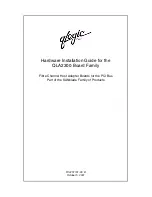
48 • Fieldbus controller 750-842
Description
Modular I/O System
ETHERNET TCP/IP
3.2.1 Description
The programmable fieldbus controller 750-842 (short: PFC) combines the
ETHERNET TCP/IP -functions of the fieldbus coupler 750-with that of a pro-
grammable logic control (PLC).
The application program is created with WAGO-I/O-PRO 32 in accordance
with IEC 61131-3.
All input signals of the sensors are grouped in the controller. According to the
IEC 61131-3 programming, process data treatment occurs locally in the PFC.
The link results created in this manner can be put out directly to the actuators
or transmitted to the higher ranking control system via the bus.
To be able to transmit process data via ETHERNET, the controller supports a
number of network protocols. The process data exchange is made with the aid
of the MODBUS/TCP protocol.
The programmer has the option to use function modules for programming cli-
ents and servers for all transport protocols (TCP, UDP, etc.) via a socket-API.
He has access to all fieldbus and I/O data.
Once the ETHERNET TCP/IP fieldbus controller is connected, it detects all
I/O modules connected to the node and produces a local process image on the
basis of the detected modules. This can be a mixed arrangement of analog
(word-by-word data exchange) and digital (bit-by-bit data exchange) modules.
The local process image is subdivided into an input and an output data area.
The data of the analog modules is mapped into the process image in the order
of their position after the bus coupler.
The bits of the digital modules are grouped to form words and also mapped
into the process image once mapping of the analog modules is completed.
Once the number of digital I/O’s exceeds 16 bits, the coupler automatically
starts another word.
Information on configuration, status and the I/O data of the fieldbus node are
stored in the fieldbus controller as HTML pages. These pages can be read via a
conventional WEB browser.
















































